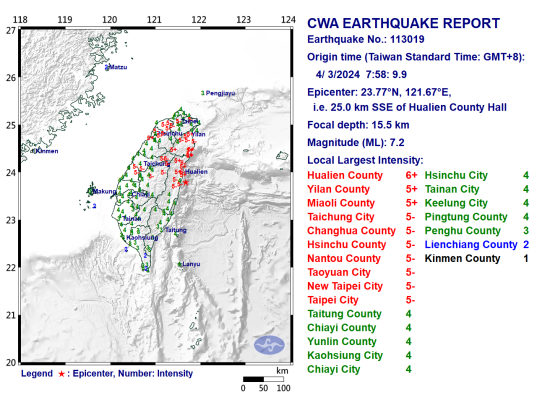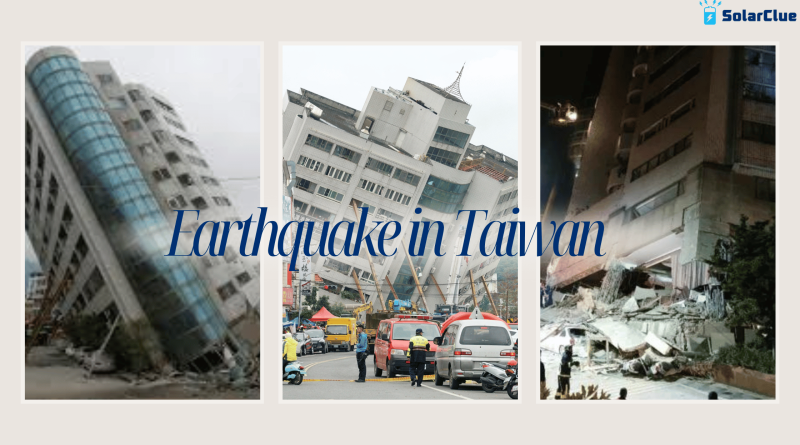Taiwan’s Encounter with a 7.4 Magnitude Earthquake
In a seismic upheaval, Taiwan was rocked by a formidable 7.4 magnitude earthquake, leaving a trail of destruction and sparking widespread concern. The tremors, described as the strongest in a quarter-century, struck with alarming force, resulting in the loss of four lives and leaving over 700 individuals injured. The epicenter of the earthquake was reported to be in the mountainous, sparsely populated eastern county of Hualien.
Table of Contents
Earthquake in Taiwan: Strongest in 25 Years
The aftermath of the earthquake saw numerous buildings collapsed, trapping approximately 20 individuals beneath the rubble. Rescue operations swiftly commenced, with emergency responders working tirelessly to extricate those trapped and provide medical assistance to the injured. Taiwan’s government issued a tsunami warning in the wake of the earthquake, heightening tensions and prompting precautionary evacuations in coastal areas.
In response to the disaster, neighboring Japan expressed solidarity with Taiwan, offering assistance and support in the recovery efforts. Meanwhile, international organizations and agencies mobilized to assess the extent of the damage and provide aid where needed. As aftershocks continued to rattle the region, residents remained on high alert, bracing for potential further tremors.

The earthquake serves as a stark reminder of the region’s vulnerability to natural disasters and underscores the importance of preparedness and resilience in the face of such crises. Authorities and communities alike are urged to prioritize safety measures and bolster infrastructure to minimize the impact of future seismic events.
The Role of Solar Energy in Sustainability
Amidst the chaos caused by natural disasters, renewable energy sources like solar power offer a ray of hope. Installing solar power systems can significantly contribute to environmental sustainability and resilience against such calamities. Solar energy provides a reliable alternative to traditional power grids, ensuring uninterrupted energy supply during emergencies.
Harnessing Solar Power for Disaster Resilience
Amidst the challenges of an earthquake, solar energy emerges as a resilient solution. When conventional power sources falter, solar power stands ready to energize critical facilities like hospitals and emergency shelters. This renewable energy source serves as a reliable backup, ensuring continuity in essential services during times of crisis. Moreover, embracing renewable energy initiatives offers a dual benefit. Not only does it reduce our dependency on fossil fuels, but it also addresses the root causes of climate change. By mitigating these underlying factors, we not only pave the way for a sustainable future but also contribute to minimizing the environmental triggers that can exacerbate seismic activity. Therefore, integrating solar energy into our infrastructure not only enhances resilience but also aligns with broader efforts to combat climate change and its associated risks.
Building a Sustainable Future
In the aftermath of the recent earthquake in Taiwan, it is essential to prioritize both immediate relief efforts and long-term strategies for sustainable development. By promoting green initiatives and investing in renewable energy infrastructure, societies can build resilience and adaptability to withstand the impacts of earthquakes and other natural disasters.
Conclusion
The recent earthquake in Taiwan underscores the need for preparedness and environmental stewardship in the face of natural disasters. While the immediate focus remains on recovery efforts, it is imperative to adopt sustainable practices and harness renewable energy sources to build resilient communities and safeguard our planet’s future. Let us seize this opportunity to work towards a more sustainable and disaster-resilient world.




